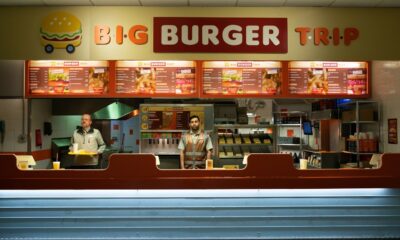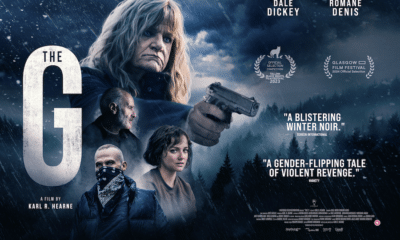
Aron Ralston. If you haven’t heard that name before then you should either a) keep reading to discover what this film is all about or b) stop reading right now if you want the movie to be a surprise. In 2003, Ralston became an overnight American hero after he was found wandering the Utah desert with only one arm intact and in need of a serious drink. Turns out he had been stuck in a canyon for nearly 6 days with a limited amount of water and only a blunt knife standing between him and the billion-year-old boulder that was crushing his arm. Sound like a recipe for movie success? Well, in the right hands, yes (pun not intended). If Ralston’s book, Between a Rock and a Hard Place had been put into the tender loving arms (okay… Pun intended) of the SAW movie-makers (and yes, apparently they did ask to secure the rights) then this would have been a very different review. Instead, he put his inspirational tale into the care of visionary TRAINSPOTTING and SLUMDOG MILLIONAIRE director, Danny Boyle. Wise choice Ralston, because what we have now is the entrancing 127 HOURS, a movie that is infused with twists and turns and a level of kinetic energy that ensures it does justice to its harrowing yet uplifting subject matter.
 127 HOURS follows Ralston on his now famous journey into the Blue John Canyon. What unfolds is something that will be permanently etched on viewers’ memories for a while to come. Ralston is introduced as a typical latchkey kid, a child of the late ‘70s (Generation X) who has grown up with the belief that there’s no need to have someone looking over your shoulder and that the best way to look after one’s self is by doing it alone. His belief in his own invincibility and the necessity he feels to escape his connection to others in search of glorified independence, much like Christopher McCandless in INTO THE WILD, is blatantly thrust into our faces during the movie’s opening credits. A three-way split screen is used to parallel our solitary protagonist preparing for his impending hike and ignoring calls from his relatives, with scenes of groups of people coming together to work, celebrate and pray. It certainly isn’t subtle but it does the job nicely.
127 HOURS follows Ralston on his now famous journey into the Blue John Canyon. What unfolds is something that will be permanently etched on viewers’ memories for a while to come. Ralston is introduced as a typical latchkey kid, a child of the late ‘70s (Generation X) who has grown up with the belief that there’s no need to have someone looking over your shoulder and that the best way to look after one’s self is by doing it alone. His belief in his own invincibility and the necessity he feels to escape his connection to others in search of glorified independence, much like Christopher McCandless in INTO THE WILD, is blatantly thrust into our faces during the movie’s opening credits. A three-way split screen is used to parallel our solitary protagonist preparing for his impending hike and ignoring calls from his relatives, with scenes of groups of people coming together to work, celebrate and pray. It certainly isn’t subtle but it does the job nicely.
Boyle’s fast-paced way of moving the plot along means we get acquainted with the character of Ralston very quickly. As he packs up his gear and heads off on his hike, we are given foreboding close-up shots of his hand narrowly missing his Swiss army knife and the water bottle overflowing with precious H2O under a running tap. When he falls off his bike and takes a picture as if to say ‘look what I survived, ha ha’ we realise that this guy has a bit of a superhero complex. When he meets two girls and acts as their guide for a short time before zooming off on his own we discover he isn’t that bothered about building relationships. The start of the movie sets Ralston up as a rather selfish loner type of guy, making the journey of self-discovery that he’s about to go on become all the more poignant.
 It’s at this point that a large boulder comes along with seemingly one object in mind, to screw things up for Ralston. And it does. Spectacularly. While climbing, he pulls a boulder from its peaceful position and they tumble together, his arm getting in the way of the rock’s new resting place. As the camera pans out over the desert, it quickly dawns on him (and us) that he’s managed to get himself into a serious pickle, of which there’s only one logical escape: death. But he’s not ready to give up yet, and so begins the 127 hours of his entrapment.
It’s at this point that a large boulder comes along with seemingly one object in mind, to screw things up for Ralston. And it does. Spectacularly. While climbing, he pulls a boulder from its peaceful position and they tumble together, his arm getting in the way of the rock’s new resting place. As the camera pans out over the desert, it quickly dawns on him (and us) that he’s managed to get himself into a serious pickle, of which there’s only one logical escape: death. But he’s not ready to give up yet, and so begins the 127 hours of his entrapment.
Boyle and his team are in their movie-making element as they set about the challenge of bringing the viewer into the main character’s struggle to survive. The methodical camera work covers even the most minute details of Ralston’s time spent imprisoned. Tracking shots reminiscent of TRAINSPOTTING take us inside the water bottle as Ralston meters out his sips, and close up shots of him eating his remaining food rations remind us how precarious his position is. When the dehydration sets in, Boyle begins to flesh out the midway section and ramp up the action by adding flashbacks, hallucinations and dreams. These add to the underlying theme of the movie (Ralston’s spiritual transformation from single, selfish man, to man connected to the world) but detract from the claustrophobia that may have heightened the tension at the halfway point. Nevertheless, every single scene is put together to reflect the facets of Ralston’s incarceration; his insane need for water, his fear of dying, and his wish for freedom, and we, the viewer, experience it with him.
The scene where Ralston finally decides to take matters into his own hands and make a break for freedom makes Tom Hanks’ rock-to-tooth extraction in CASTAWAY look like a fun activity for the kids. While it would be a shame if the idea of this three minute section were to stop people from going to watch this movie, it’s still necessary to say exercise a bit of caution if you have a weak-stomach or are a little faint-hearted. The scene is not over-the-top, but its anatomical faithfulness, Boyle’s jerking camera work, the flashes of bright white light, and the heady soundtrack, combine to create a frantic and distressing experience for the viewer. The use of a gruelling buzzing noise (resembling the noise in the game ‘Operation’) as an audible version of Ralston’s nervous system screaming out in protest, is sheer genius. Gore is kept to a minimum, but it is rather the above, and the vision of James Franco’s face contorted with pain that may make the stuffing explode out of the arm rests as you grip them tightly. The short of it is: if in doubt, avert thine eyes.

Speaking of Franco, it’s probably high-time to chuck an Oscar at him (or at very least a nomination), as his portrayal of Ralston is amazing to watch. Franco plays him with such stark realism that during some scenes (particularly home video segments where he talks directly to camera) you start to forget that this is just a big screen interpretation of someone else’s (very real) nightmare. As the minutes wind on, he seems to transform physically and emotionally, adding a layer of tonality to the character that makes becoming spellbound particularly easy.
 127 HOURS as a movie, is unshakeable. Once you’ve seen it, you’ll be thinking about it for a long time after. The very ending itself will probably go down as one of the most uplifting in movie history. It has an almost beatific resonance, like if Jack Kerouac had got stuck under a boulder and consequently decided to make a movie about it, his ending would’ve gone something like this. The use of Icelandic band Sigur Ros’ soaring music (composer A R Rahman must be given special mention for putting together one of the best soundtracks of 2010) playing to uplifting scenes of Ralston walk to freedom are filled with so much sentimental saccharine your teeth might fall out while you weep with joy. But hey, this movie is worth a trip to the dentist.
127 HOURS as a movie, is unshakeable. Once you’ve seen it, you’ll be thinking about it for a long time after. The very ending itself will probably go down as one of the most uplifting in movie history. It has an almost beatific resonance, like if Jack Kerouac had got stuck under a boulder and consequently decided to make a movie about it, his ending would’ve gone something like this. The use of Icelandic band Sigur Ros’ soaring music (composer A R Rahman must be given special mention for putting together one of the best soundtracks of 2010) playing to uplifting scenes of Ralston walk to freedom are filled with so much sentimental saccharine your teeth might fall out while you weep with joy. But hey, this movie is worth a trip to the dentist.
A

Latest Posts
-


Film News
/ 3 days agoRelease date announced for sci-fi drama ‘Sky Peals’
A UK release has been announced for Sky Peals following a debut on the...
By Paul Heath -


Amazon Prime
/ 3 days agoAmazon’s ‘Red, White & Royal Blue’ with Nicholas Galitzine and Taylor Zakhar Perez is getting a sequel
Ahead of Amazon’s inaugural upfront presentation on May 14, Amazon MGM Studios has confirmed...
By Paul Heath -


Home Entertainment
/ 3 days agoApplauded ‘Snack Shack’ set for home debut in June
Snack Shack has had a home release date set for June in the UK....
By Paul Heath -


Film News
/ 3 days agoRelease date set for brilliant drama ‘The G’ with Dale Dickey
A release date for the brilliant crime drama The G has been set by...
By Paul Heath









